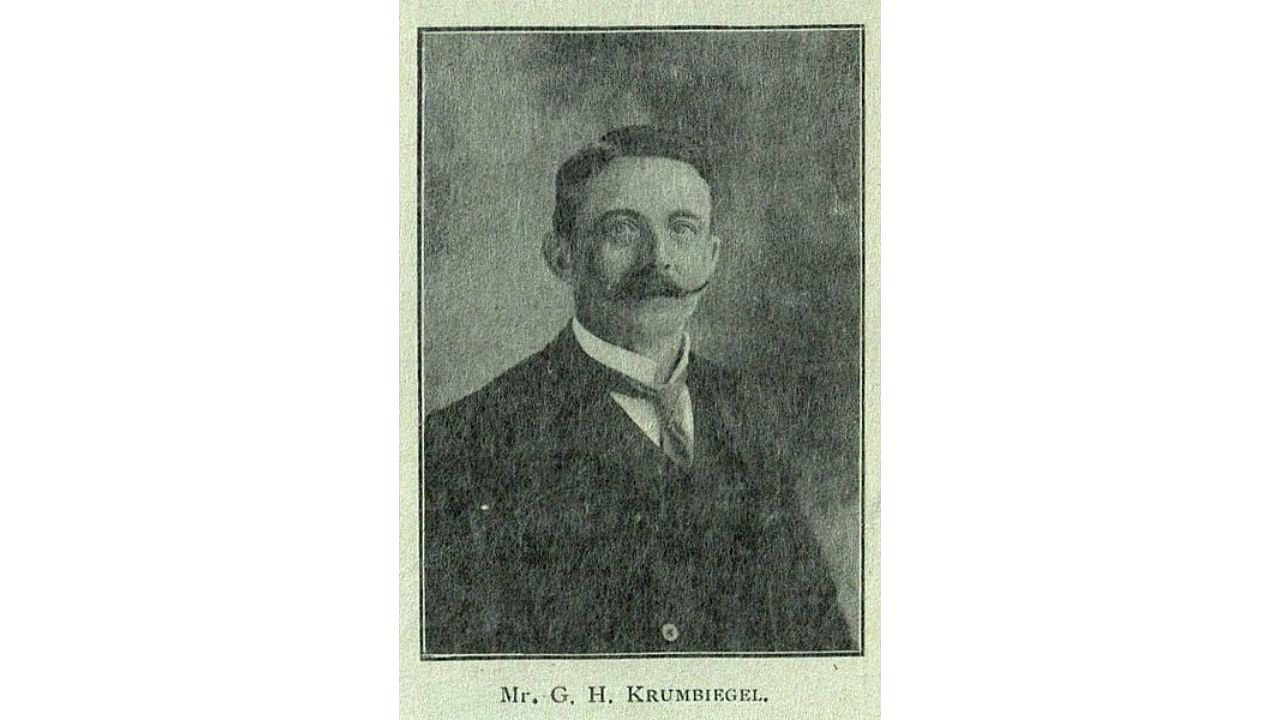
G H Krumbiegel.
Credit: Wikimedia Commons
The contributions of European officials to 19th-century Princely Mysore were significant. Many who served in different departments excelled in their fields. Among them was Gustav Hermann Krumbiegel: A horticulturist, economic botanist and landscape designer. Economic botanists study the relationship between people and plants. Perhaps this is why the official was able to help develop one of Bengaluru’s greenest and well-loved community spaces — Lalbagh.
Krumbiegel was born on December 18, 1865 in pre-unified Germany. After his primary education, he joined a training course to learn about the cultivation of fruits and vegetables. Later, he joined a private garden at Hamburg.
After moving to Great Britain, he joined another course at the Royal Botanic Gardens in Kew, where he learnt both the theory and application of botanical sciences. Here, he also sharpened his English-speaking skills.
After completing training, he wished to serve in British India, and therefore, joined the service of the Maharaja of Gaikwad and served as superintendent of the government gardens from April 1893 to 1907. In the same period, he offered consultations to officials of princely states like Kapurthala and Cooch Behar. He gained much experience in landscape gardening, plant life, and especially in economic botany. In 1907, he was appointed the superintendent of the government gardens in Princely Mysore.
Work in the state
By this time, the princely state of Mysore had carved a niche for itself in landscape gardens and parks. John Cameron, the previous superintendent, had made significant contributions. In 1891, Cameron had brought out a second edition of a catalogue of plants entitled ‘Capturing the diversity of the flora in Bengaluru’s gardens’. Krumbiegel continued the traditions of his predecessor.
Under his administration, Lalbagh was developed. Being trained in economic botany, Krumbiegel also took interest in the expansion of parks and gardens across Princely Mysore. He contributed to the beautification and expansion of other minor gardens and parks in the state. Like his predecessor, he also served as the director of the government museum at Bangalore.
Contemporary records preserved in the state archives chronicle many of his contributions to Princely Mysore. A catalogue of trees planted at Lalbagh was also prepared by him. This labelling of plants included the botanical names and sometimes local nomenclature.
Krumbiegel introduced a number of varieties of plants in the gardens. Particularly, several flower and fruit-bearing plants were planted in different landscaped gardens and parks. Sunflower, soya bean, American maize and Mexican maize were introduced. Research was also undertaken regarding cultivation and the prevention of diseases in plants. The department of agriculture took the lead in these activities.
Because of Krumbiegel’s initiatives, Lalbagh began to acquire prominence. Contemporary records speak about the introduction of several species from foreign lands like Italy, England and Australia. A horticultural training school was also established to provide training and hands-on experience.
In 1911, the Mysore Economic Conference was inaugurated. A committee for agriculture was constituted. It was during this phase that horticulture societies were established in Bangalore and Mysore, along with soil testing laboratories to conduct experiments on soil. Agricultural extension stations and kiosks were established to provide information to farmers. To improve agricultural implements, several workshops were organised. Demonstration classes were conducted. Krumbiegel utilised all available avenues to carry on the traditions that had been established during the time of his predecessors.
Till his death in 1956, he provided consultations for design and planning across the city. This included providing ground plans and designing the buildings. Some of these buildings still speak of his taste and aesthetic sense.